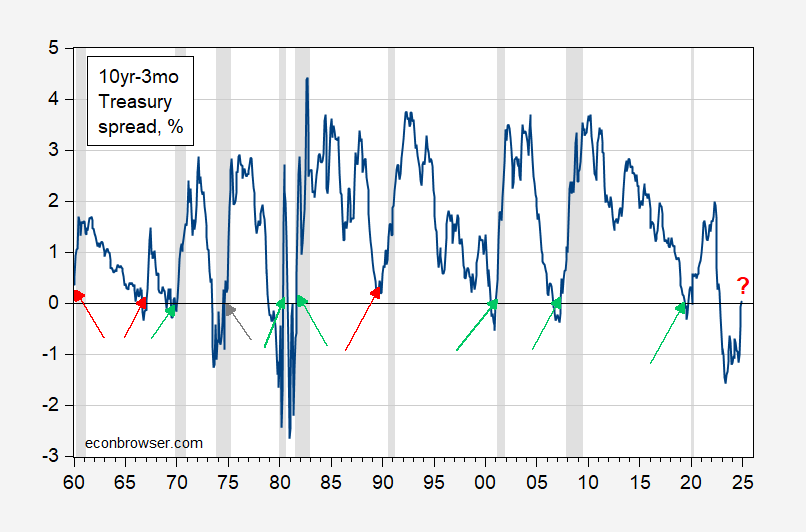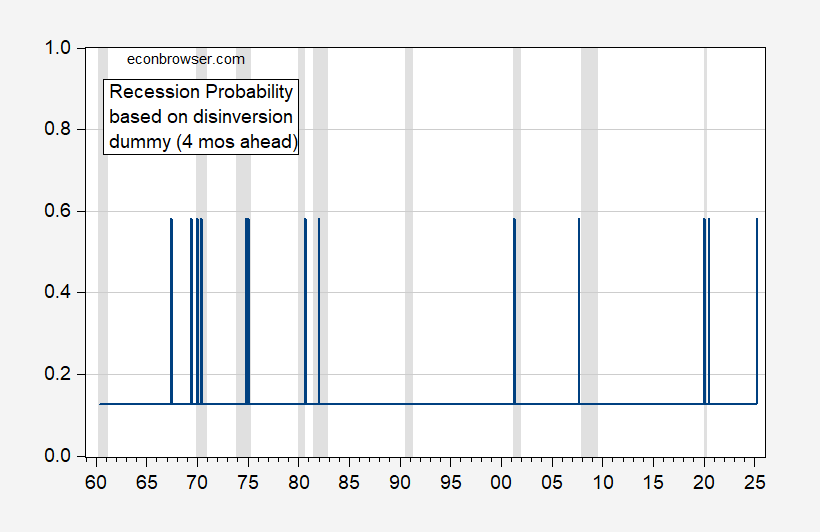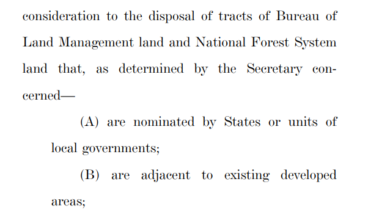“A Recession Is Coming: Yield Curve Indication”

That’s the title of a GJ Collins article on SeekingAlpha today — but it’s not what you think it means…
The resolution of the inverted 10-year and 3-month yield curve usually signals a recession down range.
Well if inversions precede recessions, than this kind of makes sense, although the question is then how much do dis-inversions precede recessions (or do they occur during the recession).
To evaluate this formally, consider the 10yr-3mo term spread from 1960 onward.
Figure 1: 10yr-3mo Treasury term spread, % (blue). NBER defined peak-to-trough recession dates shaded gray. Green arrows indicate events consistent with disinversion signal. Red arrows indicate events not consistent. Source: Treasury via FRED, NBER, and author’s calculations.
I create a disinversion dummy taking on a value of 1 in the first month the spread is positive after being in the negative range. Hence, increases in the spread when no inversion has taken place do not register a 1 value for the dummy.
The maximal pseudo-R2 is obtained for a spread of 4 months, over the 1960-2024 period (assuming no recession took place in 2024) is about 0.023. Using this specification (a probit on a binary dummy) yields these recession probabilities.
Figure 2: Estimated recession probabilities using 4 month lead of recession on disinversion dummy (blue). NBER defined peak-to-trough recession dates shaded gray. Source: NBER, and author’s calculations.
The 1960-61 and 1990-91 recessions are missed (although a 10yr-2yr disinversion might catch the latter), while a recession is predicted for April 2025. Of course, if the inversion failed to predict the 2024 recession, is there reason to believe the disinversion will predict well?






